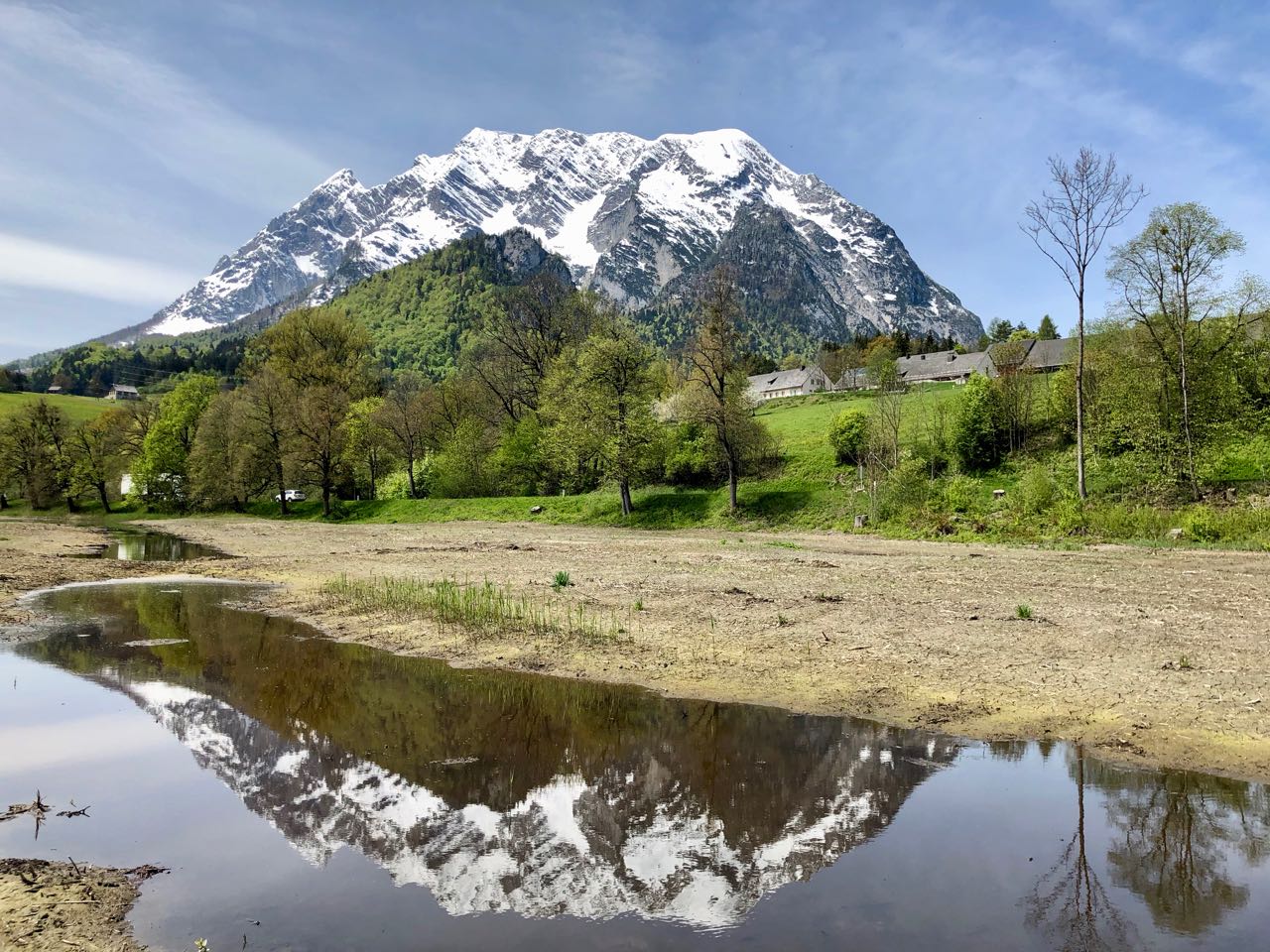The Enns river with its wetlands offers space for a variety of protected animal and plant species of community interest to live. The expansion of the Eastern Alpine railway network was crucial for the Enns regulation measures from 1860-1960 with the first breakthrough at Trautenfels Castle in today's municipality of Stainach-Pürgg. Until then, the Enns meandered through the valley floor and even moderate rainfall led to major flooding. Originally, the basin landscape was also used for agriculture to secure food, and the more profitable livestock farming was expanded (Güntschl, 1960).
At the beginning of the 19th century, the population became impoverished due, among other things, to the decline in mining and the livestock trade. The valley floor became swampy due to increased flooding caused by large-scale deforestation of the surrounding forests. With the Enns regulation, large-scale drainage also took place in order to gain new agricultural land, and land consolidation made mechanical land management possible. Even then, interventions in the landscape were intensified for industrial facilities, settlement areas and infrastructure (Ennstal railway line and Ennstal federal road B320). This is how single-mown litter and horse meadows without fertilization became multi-mown permanent meadows and, increasingly, maize fields for livestock feed production. By reviving the cooperative system, dairy farming could be promoted in the region.
With an event probability of around 10 years, the areas are also currently affected by flooding and the characteristic wet meadows are therefore primarily suitable for extensive grassland farming. Debris and flooding in the side valleys also partly affect settlement areas.

However, there are remnants of near-natural flat and raised bogs and extensively used litter meadows that have not been converted into species-poor fat meadows. The character species in the Central Styrian Ennstal, the corncrake (Crex crex) and the Siberian iris (Iris sibirica), along with the many other rare plant and animal species, need to be preserved and the corresponding habitats revalued, i.e. maintained. These areas in Ennsboden are now part of the European protected area network according to the Habitats and Birds Directive and were designated as Natura 2000 areas by regulation in 2006. The designation of these, partly overlapping areas, was not without conflicts between land use and nature conservation interests. The protection of natural habitats as well as wild animals and plants is anchored in the FFH directive; at the same time, economic, social, cultural and regional requirements should be taken into account. The necessary measures must be carried out in each designated area in accordance with the relevant conservation objectives. However, the regulations for the designation of Natura 2000 areas do not specify any mandatory measures for the favorable conservation status of the protected species and habitats. Corresponding services can only be fulfilled through contractual nature conservation, i.e. in agreement with the landowners and authorized users. In addition, those land uses that are within the federal government's area of responsibility (e.g. mining, railway and road transport, the armed forces) are not restricted (LGBL. No. 56/2006). The protected areas and their peripheral areas at the foot of the Grimming are confronted with precisely these conflicts of interest.
Most of these areas continue to be used agriculturally, primarily as grassland areas for fodder production, but arable farming, especially in the form of fodder maize, is steadily increasing in these Natura 2000 areas. The consumption of land for commercial and residential areas can also be seen over the last 20 years.
Good practice examples on the flowering meadows in Trautenfels and the surrounding area are intended to show how flowering meadows can develop again in the central Styrian Ennstal through adapted ecological management. Every year at the end of May the flowers can be seen at the foot of the Grimming. Since mid-June, the calls of the corncrake can be heard again in places where there has been no mowing yet.
Further details on the landscape change from the past to the future are presented in the following article (eco.mont-Volume15, Number 2, July 2023).








